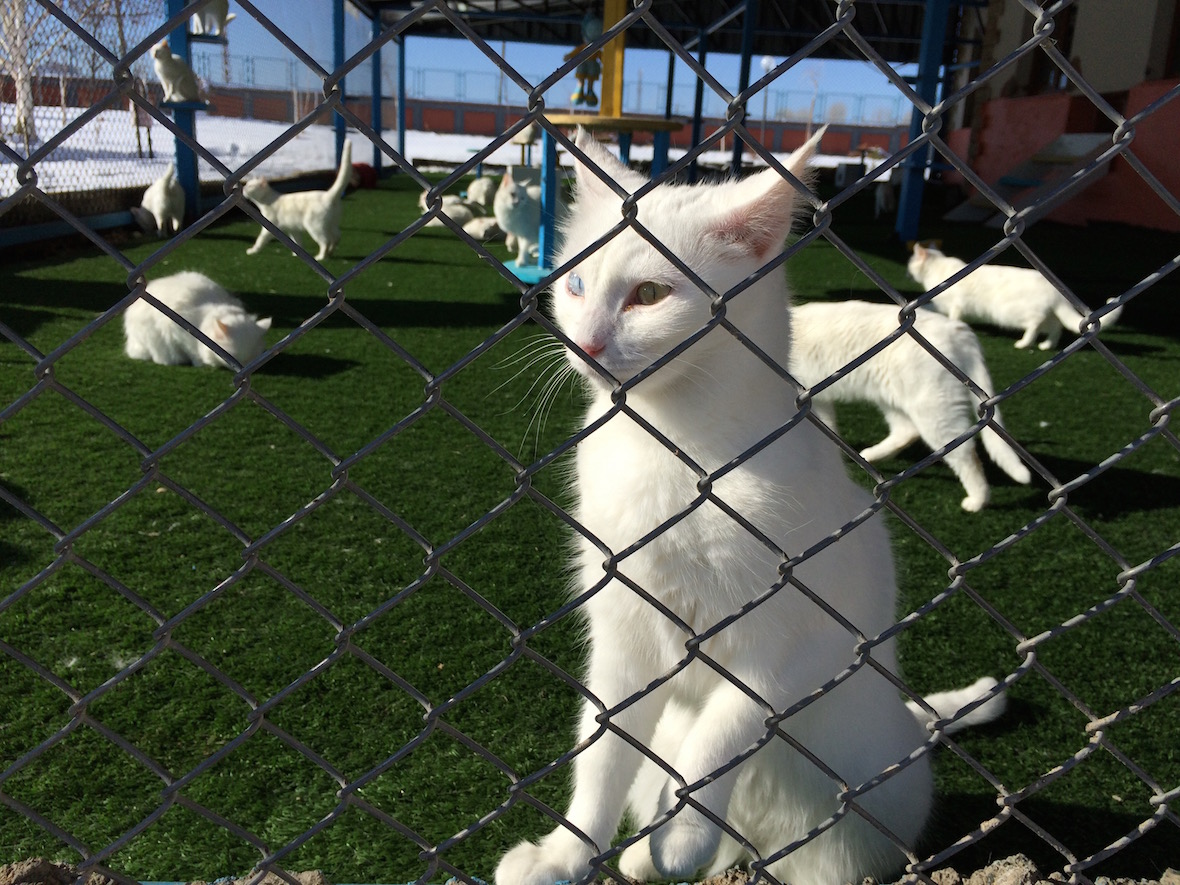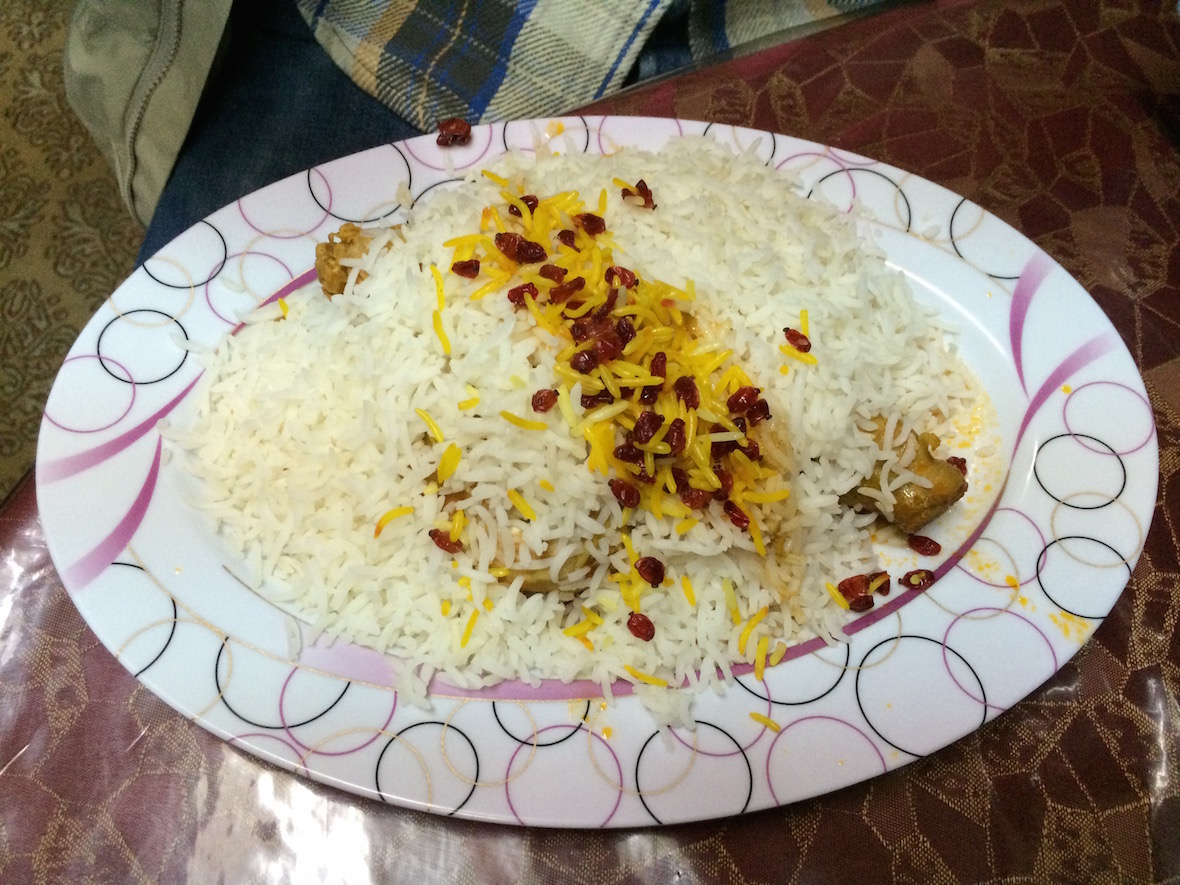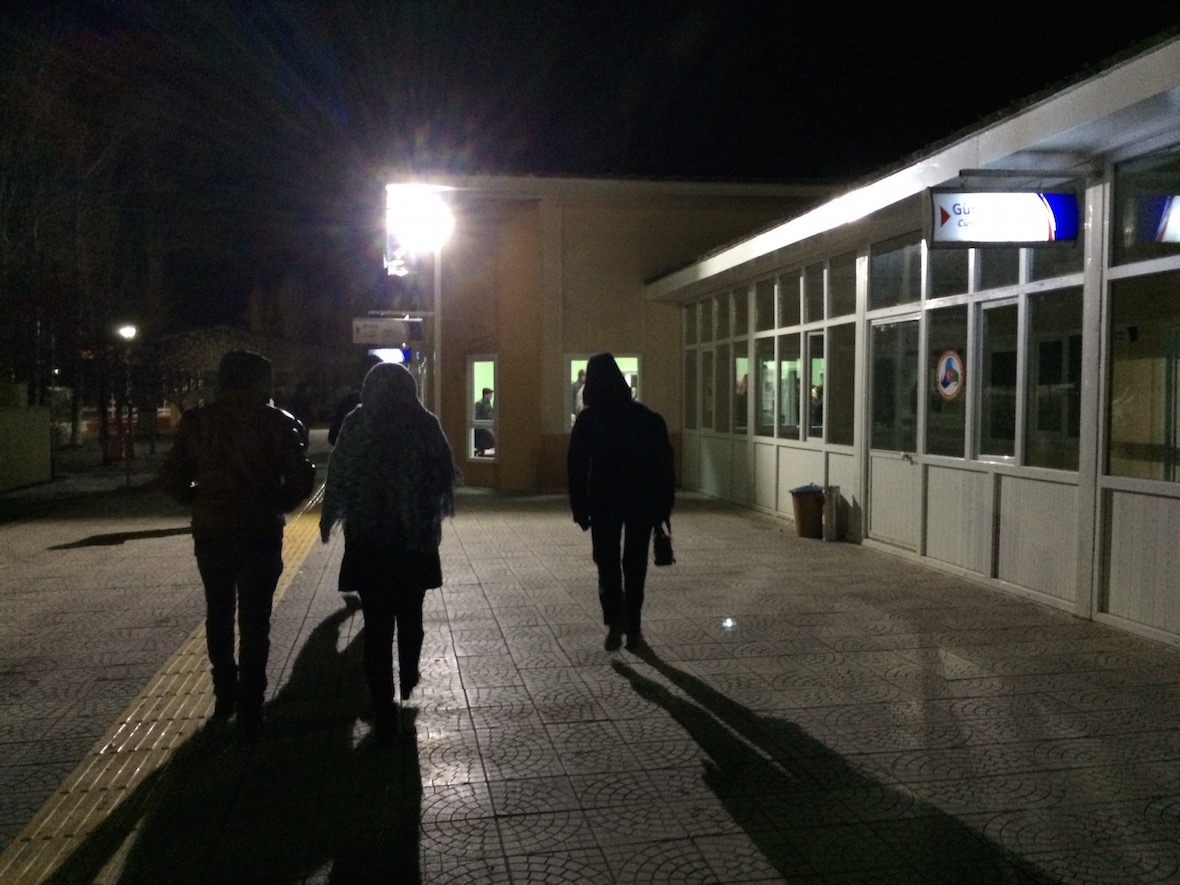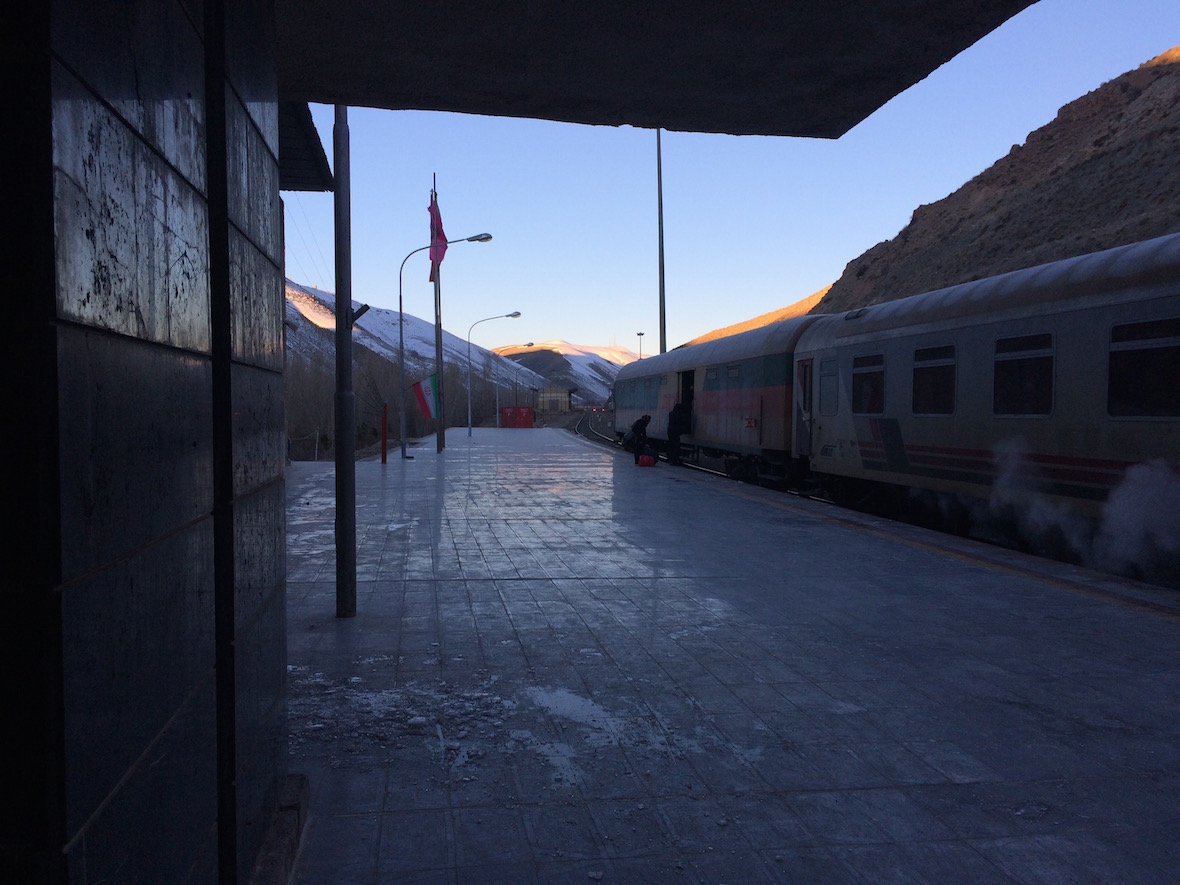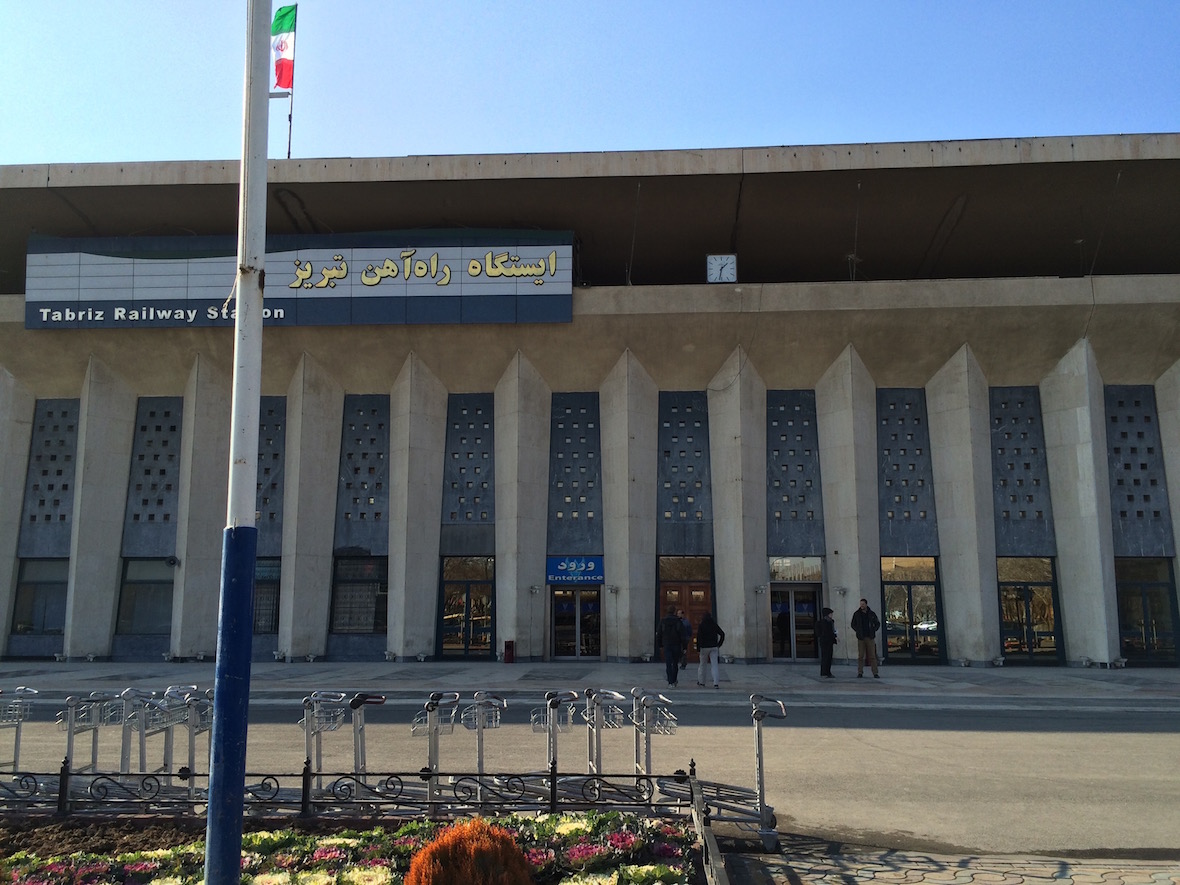In December 2014, I took a train from Van, Turkey to Tabriz, Iran. For most people, this route is unusual. Firstly, compared to general tourism in Turkey, few tourists go to Iran. Even among those going to Iran, few enter by land. And for those entering by land, most choose to take a bus from Doğubayazıt. In fact, there are three border crossings between Iran and Turkey, located at Doğubayazıt, Van, and Hakkâri respectively. Public transport can be found for the first two, while the third is quite difficult.
Out of my love for crossing railway borders, I specifically chose the train. In July 2014, I took the train across the Trans-Siberian Railway. At that time, much of my information was found on a website called Seat61. I later discovered that the author of this website not only compiled information on the Trans-Siberian Railway but even had information on London to Tehran. Most of the information I had before going came from this website.
Iran Visa
Compared to flying, the biggest difficulty with this route is the need to apply for an Iranian visa. For passport holders of most countries in the world (excluding the US, UK, Canada, etc.), Iran has a visa on arrival policy, but it is limited to entry via airports. If entering by land, you must apply for an Iranian visa in advance. Actually, even if entering by plane, a visa on arrival is not guaranteed to be issued, especially for European and American passport holders, though I have never heard of a Chinese person being refused. So, to avoid the risk of being denied entry, applying for a visa can serve as insurance.
Processing an Iranian visa requires two steps: applying for a visa authorization code (reference number) and going to the embassy to collect the visa sticker. The authorization code application needs to be done through an agency within Iran. I used Visa for Iran; the price was 55 Euros per person, and it took a week to get the visa code. Afterward, I took my passport to the Iranian embassy, presented the visa code, paid another 40 Euros to the embassy, and received the visa by mail. I submitted it on Monday and received it on Thursday. The Iranian visa is very easy to apply for; I hardly had to submit any personal materials—I didn’t even submit proof of income, insurance, etc.
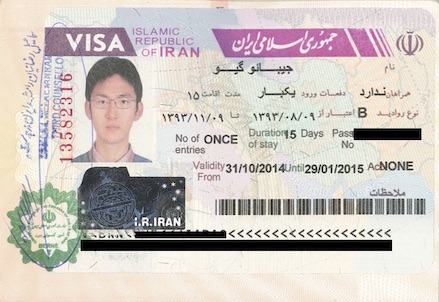
Train Tickets
The train I took actually departs from Istanbul, passes through Ankara, Tatvan, Van, and Tabriz, with the final destination being Tehran. This train runs only once a week, departing Istanbul on Tuesday and arriving in Tehran on Friday. Since I wanted to go to Van to see the Van cats, I chose to start from Van and end in Tabriz. It is said that currently, due to railway renovations between Istanbul and Ankara, one can only board from Ankara. If boarding from Ankara, there is a section involving a ferry across Lake Van when passing through Tatvan, which is also quite interesting.
Unlike European international train tickets which can be bought directly at the station, train tickets from Turkey to Iran must be ordered through a travel agency, similar to tickets from Beijing to Moscow. I found a travel agency online called “Viking Turizm” and purchased via email; their email address is info@vikingturizm.com.tr.
Compared to railway prices in Europe, Russia, and China, the price of this train is very cheap; from Ankara to Tehran, it is only about 43.2 Euros. The ticket I booked through the agency from Van to Tabriz, including the booking fee, was only 12.9 Euros per person. It should be noted that after paying online, you still have to go to their company to pick up the tickets. Their office is located next to Taksim Square in Istanbul. Since I happened to be going to Istanbul as well, I picked up the tickets in person; otherwise, I would have needed to ask them to mail them.
Van
For most tourists visiting Turkey, Van is not a famous destination. However, the Van cat (or Lake Van cat) native to Van is a famous breed, even regarded as a national treasure by Turkey. The most distinctive feature of Van cats is that they have one blue eye and one green eye, and unlike ordinary cats that fear water, Van cats can swim. Since I was in Van, I couldn’t miss seeing the Van cats. Van Yüzüncü Yıl University, located on the outskirts of Van, has a Van Cat House containing many cute cats, all purebred Van cats, and visitors can play with them.
Besides the Van cats, Van also has a large fortress located on a mountain by Lake Van. This fortress is said to have been built by the Kingdom of Urartu between the 9th and 7th centuries BC, overlooking its capital, Tushpa. The fortress is still very spectacular today, arguably the largest fortress I have ever visited.
Border Crossing
According to the timetable, the train should arrive at Van Railway Station at 9 PM and depart at 9:30 PM, but I waited until 11 PM for it to leave. While waiting at the station, I met several backpackers from Australia and Norway. They said they boarded in Ankara, but the train broke down before reaching Tatvan, so the Turkish railways arranged a bus to take them to Van, where they would board the Iranian train. It seems they missed the ferry from Tatvan to Van.
Van Railway Station is in a remote location, and one must find a taxi to get there; late at night, I spent 20 Lira to find a car. The station was very shabby, with little interior decoration and not even many seats—presumably, few trains come here usually.
Around 10 PM, suddenly everyone crowded in front of a window. I went over to look and it seemed ticket checking had started, so I followed. An Iranian Kurd asked me in English if I wanted to join them. I was quite puzzled—didn’t the train ticket already have a berth number? Only when I got to the front of the line did I realize that they were reassigning berth numbers at the window, arranging them according to the order of check-in.
After boarding the train, it felt quite nice. The berth was a sleeper in a four-person compartment, equivalent to a “Soft Sleeper” on regular Chinese trains or a second-class sleeper on Russian trains. The lower bunks also serve as two seats, which become a bed when folded down. When the conductor came to check tickets, they also distributed food: two boxes of biscuits and a packet of Iranian tea for each person, accompanied by a pot of hot water and rock sugar.
After the train started moving, I walked around and accidentally entered the dining car.
Smelling the aroma, I suddenly felt a bit hungry, so I ordered a portion of “Saffron Chicken Rice”. Only after arriving in Iran did I realize this is a classic Iranian dish, which I ate several times within a few days.
After eating my fill, it was already past midnight. I went to the train restroom to wash up briefly and went back to sleep. Before sleeping, I checked the timetable and saw that arrival in Tabriz was scheduled for 6:35 AM. I secretly surmised that since the train departed an hour and a half late, it would arrive at exactly 8 AM, so I wouldn’t have to wake up too early, and it wouldn’t delay my sightseeing plans in Tabriz (events later proved I was completely wrong).
However, after sleeping for only a short while, I was suddenly woken up. Looking at my watch, it was 1:50 AM. It turned out we were at the border. Seeing everyone else getting off, I assumed it was for border control stamps, so I quickly put on my clothes and got off.
After getting off, I was shivering from the cold; the temperature was minus 10 degrees Celsius in the middle of the night. I quickly ran into the border control building to queue up. Unexpectedly, the queue lasted for half an hour, and it was just for the exit stamp; luggage was not checked. I endured until 2:40 AM before finally returning to the train, where I fell asleep immediately. But it felt like not much time had passed before I was woken up again. It was 4 AM Turkish time. Looking at the map, I was already in Iran, so I set the time zone to Tehran, and the time jumped to 5:30 AM. This time, fortunately, we didn’t have to get off; border control officers boarded the train to stamp passports. It was 6 AM Iran time by the time the stamping was done. I thought to myself, finally, I can sleep peacefully for a while.
Not long after, I was woken up again. It was 7 AM, and everyone had to get off with all their luggage for inspection. So I had to put on my clothes, pack my luggage, and enter the railway station security hall.
The facilities at the Iranian railway station were incomparably better than those in Turkey. Not only was it warm, but there were also shops inside where one could buy breakfast. I checked the prices—they were very cheap, only one-half to one-third of the prices in Turkey! Goods in Iran are cheap because their currency, the Rial, has devalued drastically, even more severely than the Russian Ruble. This is a good thing for foreign tourists, but local people suffer for it.
In the security hall, I noticed that all women had put on headscarves. Iran is a Shia theocratic state that implements Sharia law; all women must wear headscarves in public, otherwise, they can be arrested by the religious police. This law applies to foreign tourists as well.
I had visited North Korea before and was deeply impressed by their security checks, which were meticulous to the extreme. Therefore, I held similar expectations for Iranian security checks. But to my surprise, the security check was very simple; they let me pass without even making me empty my bag. This was consistent with my later impression of Iran: Iran is not a country that seals itself off like North Korea. The outside world’s impression of Iran as closed is actually due to US economic sanctions, not by the Iranians’ own choice. The fact is that you can buy anything in Iranian markets, including iPhones and American TV shows, and there are even alcohol and pork (forbidden by Islam) in the black market.
It was already 8 AM after the security check. Looking at the map, the train had only covered half the distance, so it certainly wouldn’t arrive in Tabriz anytime soon. After tossing and turning all night, I went back to the train to continue sleeping. I woke up at 11 AM, and the train still hadn’t arrived. Finally, we didn’t arrive at Tabriz station until 1:30 PM, 7 hours late.
Tabriz Railway Station is truly very large and well-equipped, with a standard not inferior to the high-speed railway stations newly built in China in recent years. The Iranian border control and railway station this time had already overturned all my stereotypes about Iran, and subsequent events proved that this was just the beginning.
Last modified on 2017-03-16

